

May
For Chicago-area gardeners, May is typically “go time!” for planting annuals, vegetables, and herbs to fill out the garden. The lawn is actively growing, too. However, this month is a study in contrast, before and after the final frost date for the Chicago region’s USDA Hardiness Zones 5b and 6a. When planting warm-season annuals, vegetables, and herbs, proceed with caution if cold temperatures or frost are predicted, especially at night. In May, it pays to be patient and flexible.
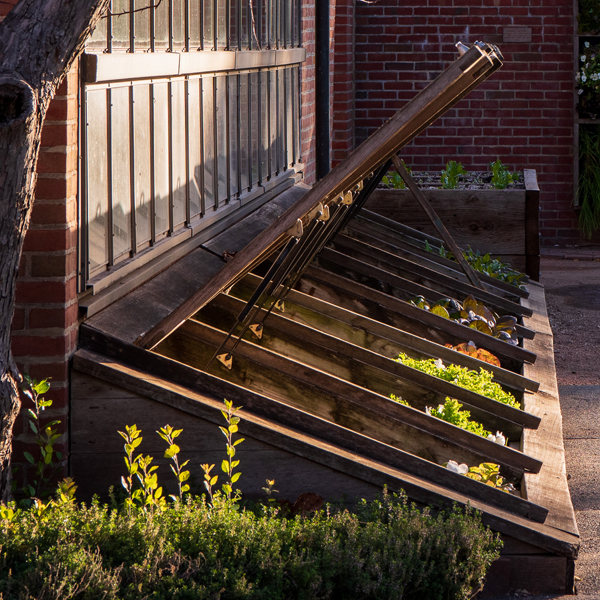

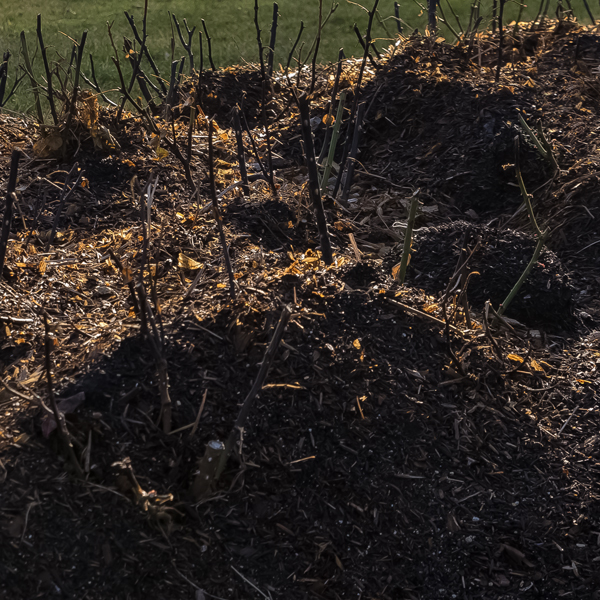
Garden To-Do List
Harden off warm-season plants
Begin to harden off warm-season transplants in a cold frame, or bring flats of small transplants outside to sunny, protected areas. Do this for successively longer periods of time, typically seven to 10 days, to acclimate them to the outdoors.
Monitor overnight temperatures
It’s important that warm-season plants aren’t exposed to cold temperatures or hard frosts. Although May 15 is the recommended planting date for most of the Chicago area, frosts can and do occur after this date.
- Be prepared to protect new plantings and bring unplanted containers indoors if cold temperatures are predicted.
- It may be best to plant warm-season plants such as tomatoes, peppers, basil, cucumbers, beans, corn, impatiens (Impatiens) and zinnias (Zinnia spp.) at the end of May or even early June. Cautious gardeners often wait until Memorial Day before planting warm-season plants.
Keep track of precipitation
Government weather models indicate midwestern springs may begin to experience more rain in the coming seasons. Avoid working the soil if it is excessively wet. Soil should crumble when squeezed into a ball. If it doesn’t, it’s best to wait until it dries out to avoid ruining the soil’s structure.
Continue to plant new perennials, ornamental grasses, and roses in beds and containers
If plant roots are pot-bound (encircling the inside of the container), it may be necessary to use a tool to loosen the rootball and flare the roots outward before planting.
Water for the birds
Provide a gentle water drip for migrating birds. The May migrants—warblers, tanagers, orioles, and buntings—are attracted to shallow pools and the slight pinging sound of dripping water.
Annual and Perennial Care
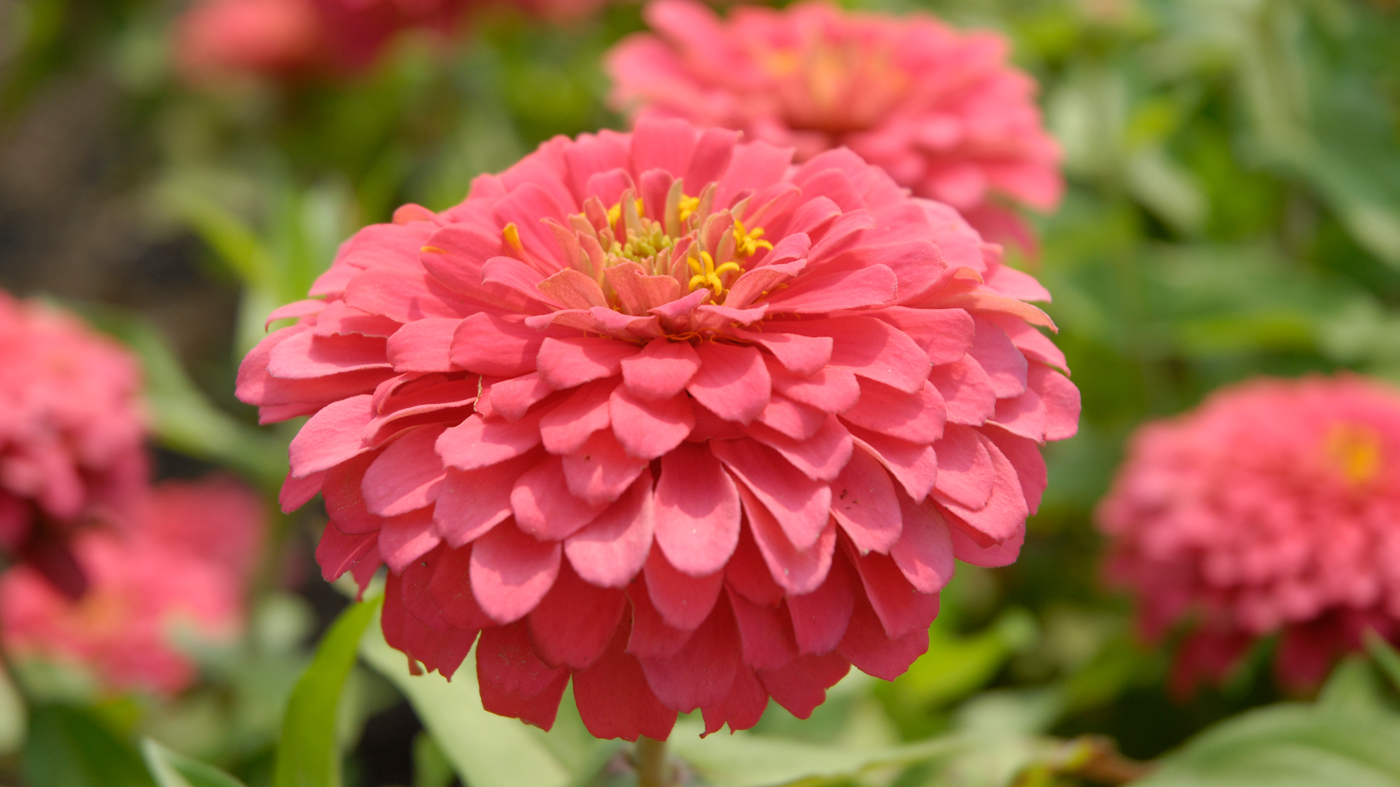
Plant warm-season flowering annuals after all threat of cold weather and frost have passed
Warm-season plants such as impatiens (Impatiens), begonias (Begonia), and zinnias (Zinnia) can be planted in the garden and containers in late May. Avoid fertilizing newly planted annual transplants for at least two weeks.
Pinch back one-third of new growth to encourage stocky habit (except vines).
Inspect and stake peonies
Continue to check peonies (Paeonia) for botrytis blight or other foliar fungal problems.
- Peonies that suffered from botrytis or bud blast last year should be sprayed regularly with a fungicide, following label directions, starting when plants are just beginning to emerge from the ground and when they are approximately 2 to 4 inches tall.
- Cage or provide support for peony blossoms when the plants are about 10 inches tall.
Tend to roses
Apply a balanced fertilizer to roses when flower buds are set. Monitor rosebushes for insects or disease:
- Check daily for fungal spots, especially in wet weather. Do not handle rosebushes if the foliage is wet and infected. Wait until affected leaves have dried before removing them and spraying the plant.
- Monitor roses for rose slugs (small white caterpillars with black heads) and their damage (tissue-like patches on the leaves).
- Succulent new green growth is particularly susceptible to aphid attack. Monitor newly planted shrubs for signs of aphids—curled, distorted tip growth. Spray a strong stream of water on damaged foliage to remove pests.
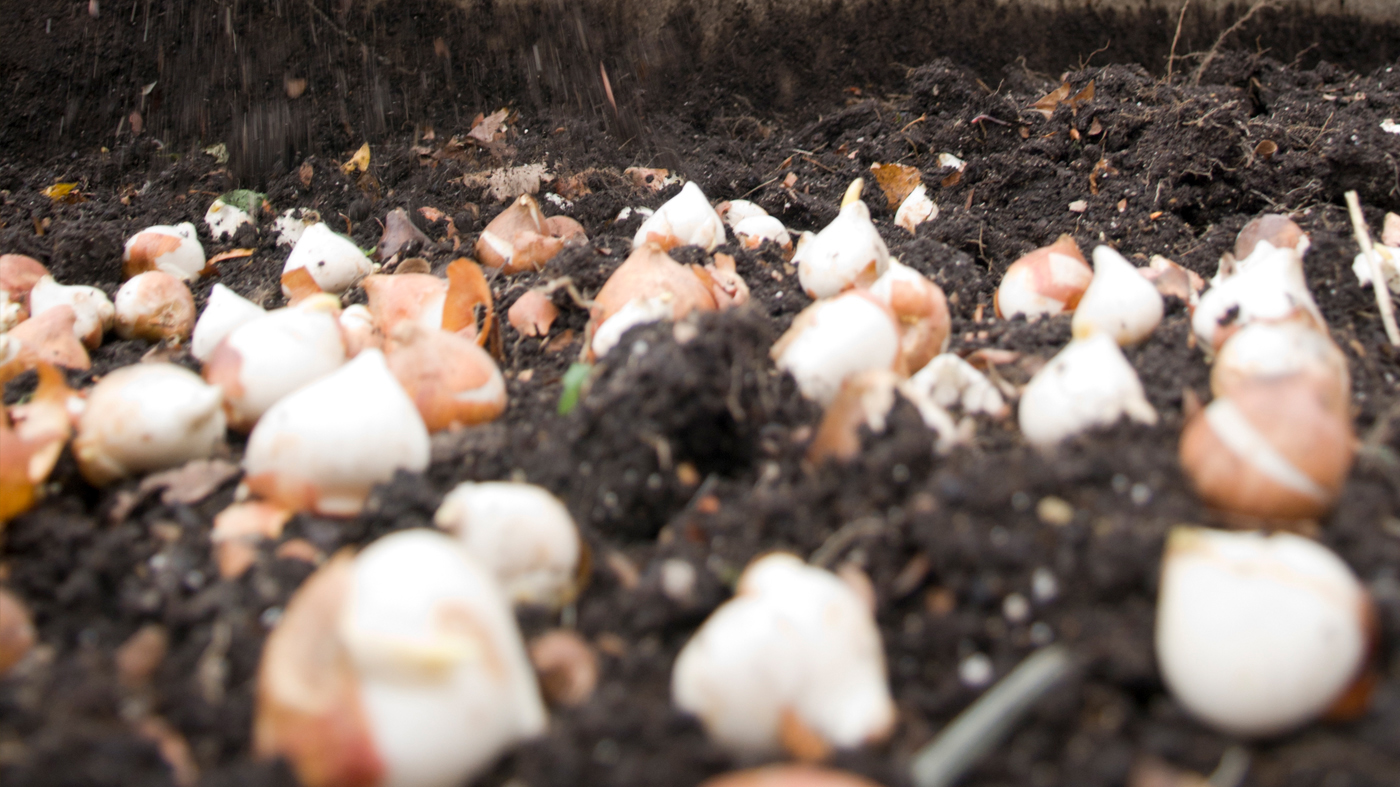
Spring bulb TLC
Allow spring bulb foliage to yellow and wither before removing it. The leaves manufacture food that is stored in the bulb for next year’s growth. Even braiding the foliage of daffodils can reduce the food production of the leaves.
Be on the lookout for jumping worms
A new invasive threat, jumping worms (Amynthas spp.) have recently been discovered in Illinois. These earthworms are native to Asia. Jumping worms have an excessive appetite that can deplete soil structure and damage plant roots. Some identifiers:
- Jumping worms are 4 to 8 inches long.
- Their clitellum (the smooth band that encircles one end of the worm) is smooth and milky-colored.
- When handled or disturbed, jumping worms typically thrash wildly and can even shed their tail.
- The soil around populations of jumping worms resembles coffee grounds.
- For more information, a a fact sheet from Cornell University provide additional information to help you distinguish jumping worms from the more familiar, good-for-your-garden European earthworms (Lumbricidae spp.).
When introducing new plants to your garden, carefully inspect the containers and soil for these worms. Also keep your garden equipment clean to help prevent moving eggs to another site. Jumping worms typically live near the surface of the soil. If you see jumping worms, put them in a sealed bag and dispose of them in the trash.
Outdoor Container Care
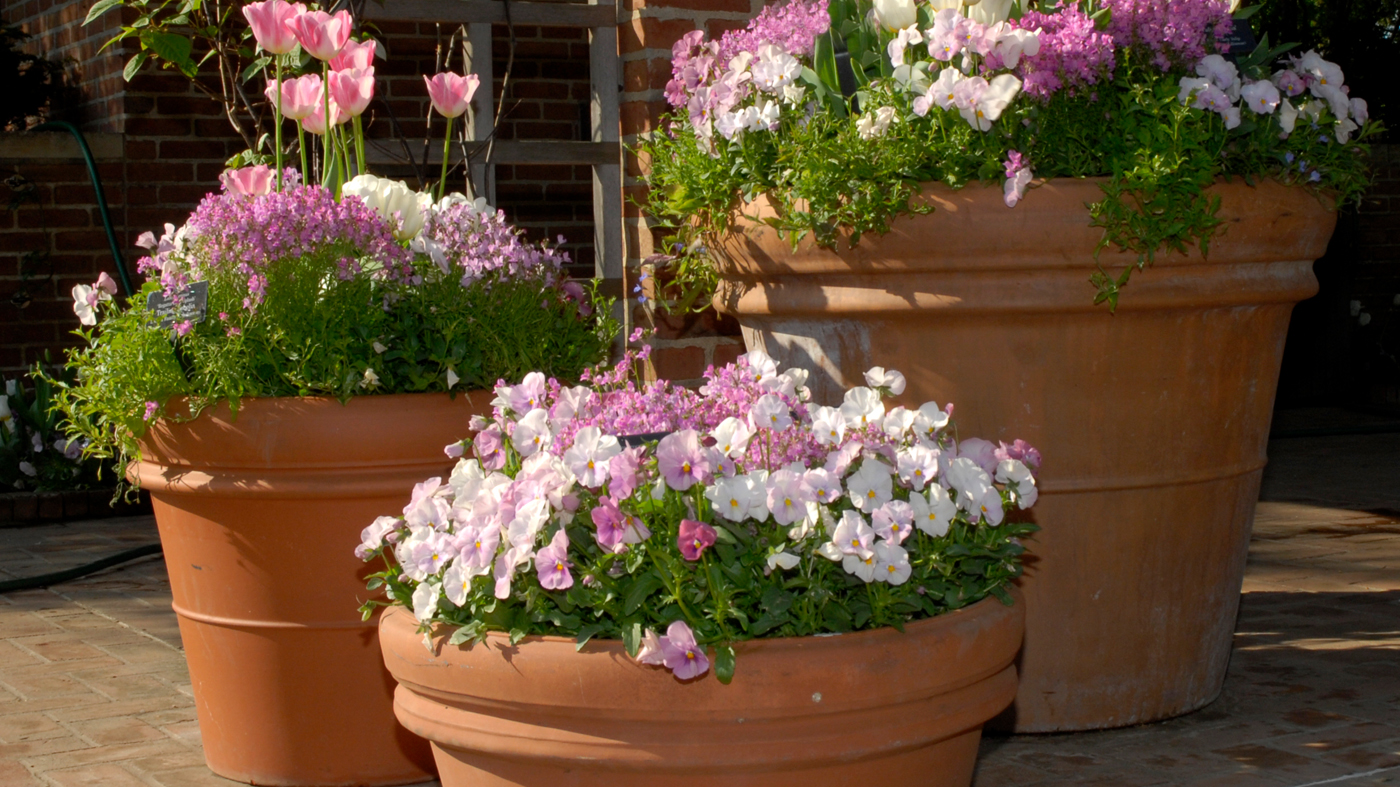
Prep containers for the growing season
Outdoor containers should have drainage holes. To provide additional drainage in large pots, consider adding landscape fabric, 1 to 2 inches of crushed gravel, styrofoam pellets, or broken shards of terra cotta.
Combine plants with similar needs
When grouping flowers, vegetables, and herbs in a single container, plants should have similar growing needs, e.g., shade plants, full-sun plants, drought-tolerant plants, etc.
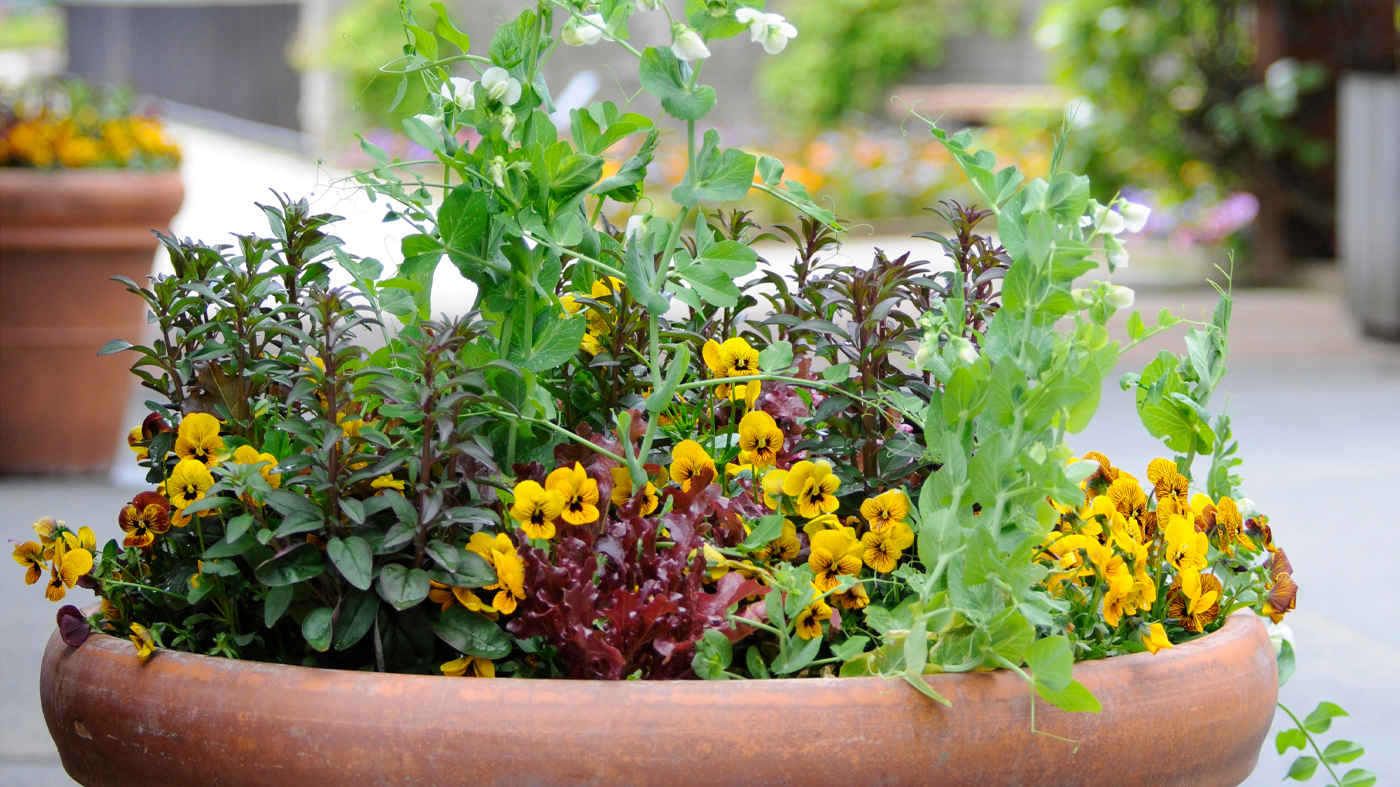
Be water-wise
Monitor annual plantings in window boxes and containers frequently because their soil can dry out more quickly than the soil in a garden bed.
- On warm, windy days, hanging baskets may require water every day. Terra cotta pots will dry out faster than plastic.
- Consider incorporating water-conserving granules into container soil to help reduce water stress. Follow label directions.
- Always water the soil thoroughly before fertilizing containers.
Fruit, Vegetable, and Herb Care

Harden off warm-season crops
Harden off warm-season vegetable transplants in a cold frame, or bring flats of small transplants outside to sunny, protected areas for successively longer periods of time, typically for a period of seven to 10 days.
Compost garden beds
Spread several inches of aged compost on vegetable and herb beds, if you haven’t done so already.
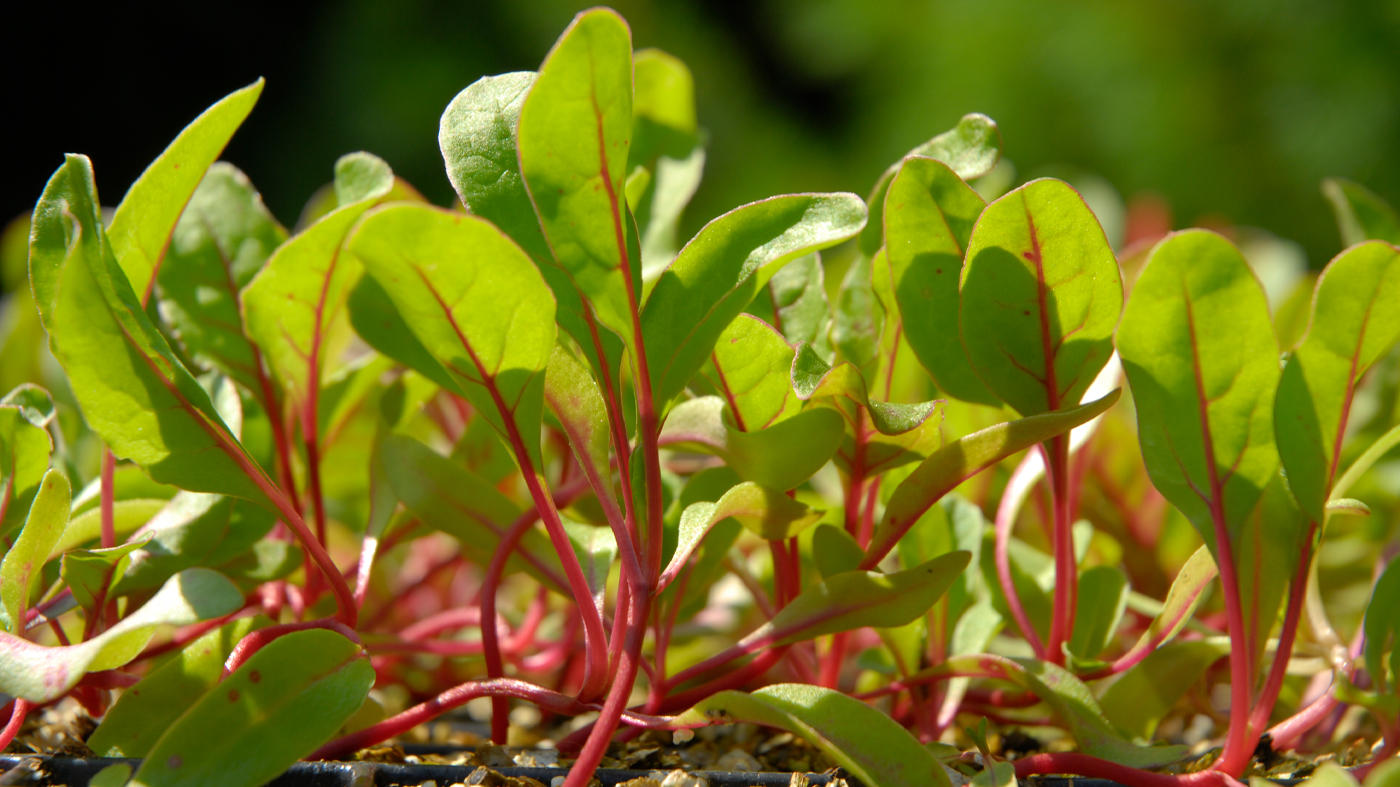
Cultivate vegetables and herbs
Plant warm-season crops such as corn, snap beans, and summer squash in mid- to late May, after all threat of frost has passed.
Thin carrots, beets, and late lettuce.
When harvesting lettuces, cut every other plant to the ground. This practice allows each lettuce head to develop fully.
It’s important for asparagus and rhubarb to develop strong root systems before harvesting. Asparagus can be harvested the third year after planting. Rhubarb can be harvested after the second year. Harvest green onions, lettuce, and radishes. Mesclun mix or cut-and-come-again lettuces can be harvested to a few inches three separate times before the plants have exhausted themselves.
In order for June-bearing strawberries to develop strong root systems and encourage good berry production, the flowers should be removed as soon as they appear in the plant’s first year of growth.
Plant warm-season herbs, such as basil and rosemary, after all threat of frost has passed.
Tree and Shrub Care

Continue planting trees and shrubs
Plant early in the morning, when temperatures are cooler.
Water thoroughly at planting time and continue for the first year with about 1 inch of water a week, spread throughout the root zone.
Apply 2 to 3 inches of mulch to root zones in order to conserve moisture and suppress weeds. Keep mulch away from the trunks of trees and shrubs.

Prune spring-flowering shrubs and ornamental trees
Trees and shrubs that produce buds on previous year’s growth can be pruned as their flowers fade, before new buds are produced. These include forsythia (Forsythia spp.), lilac (Syringa spp.), magnolias (Magnolia spp.), viburnum (Viburnum spp.), and azaleas and rhododendrons (Rhododendron spp.).
Old canes of forsythia and lilac can be pruned to the ground.
To help promote flower production for the following year, pinch off about one-half of new green growth when it is at least 1 inch in length.
Lawn Care
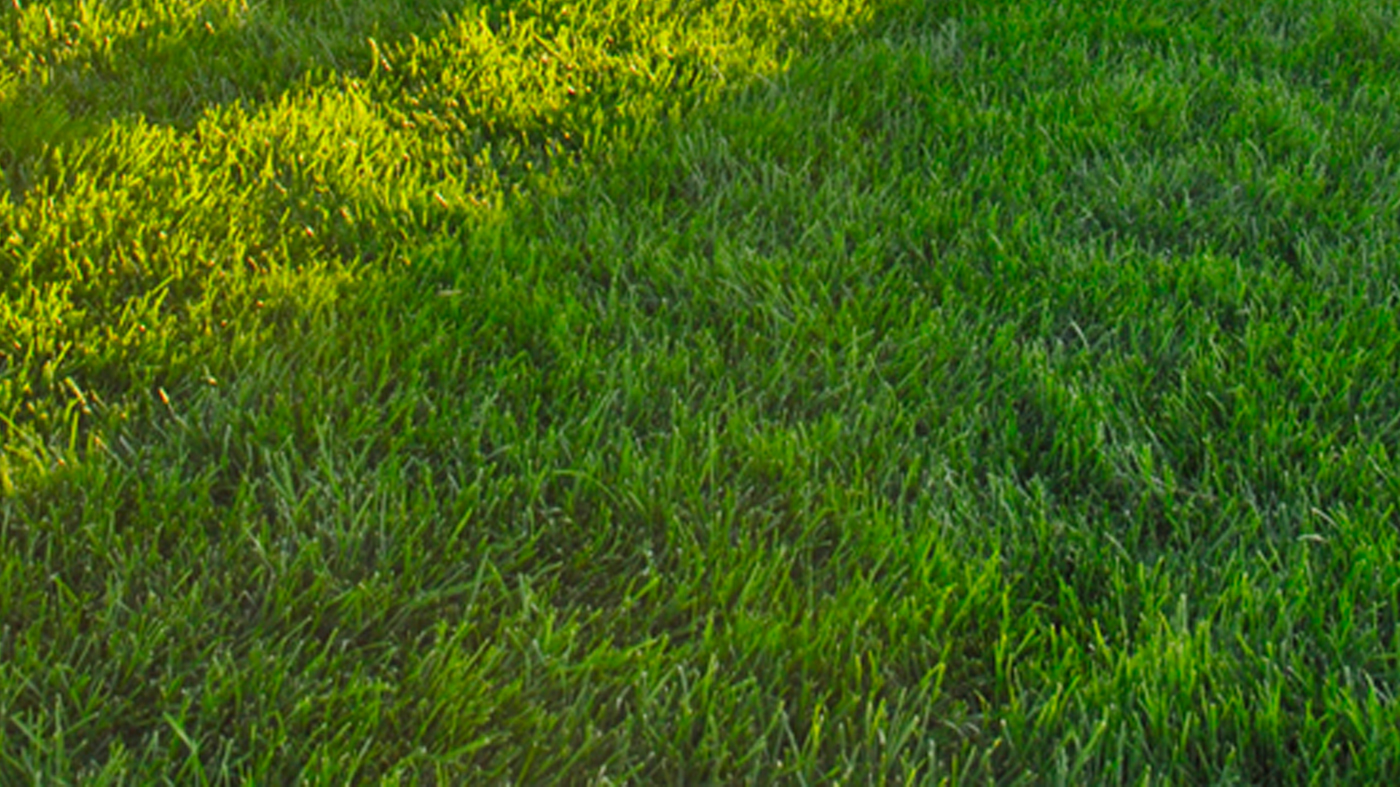
Mowing tips
Mow lawn when grass is 2½ to 3 inches tall. No more than one-third of grass blades should be removed at a time.
Leave grass clippings on the lawn to return nutrients to the soil, or add them to your compost pile.
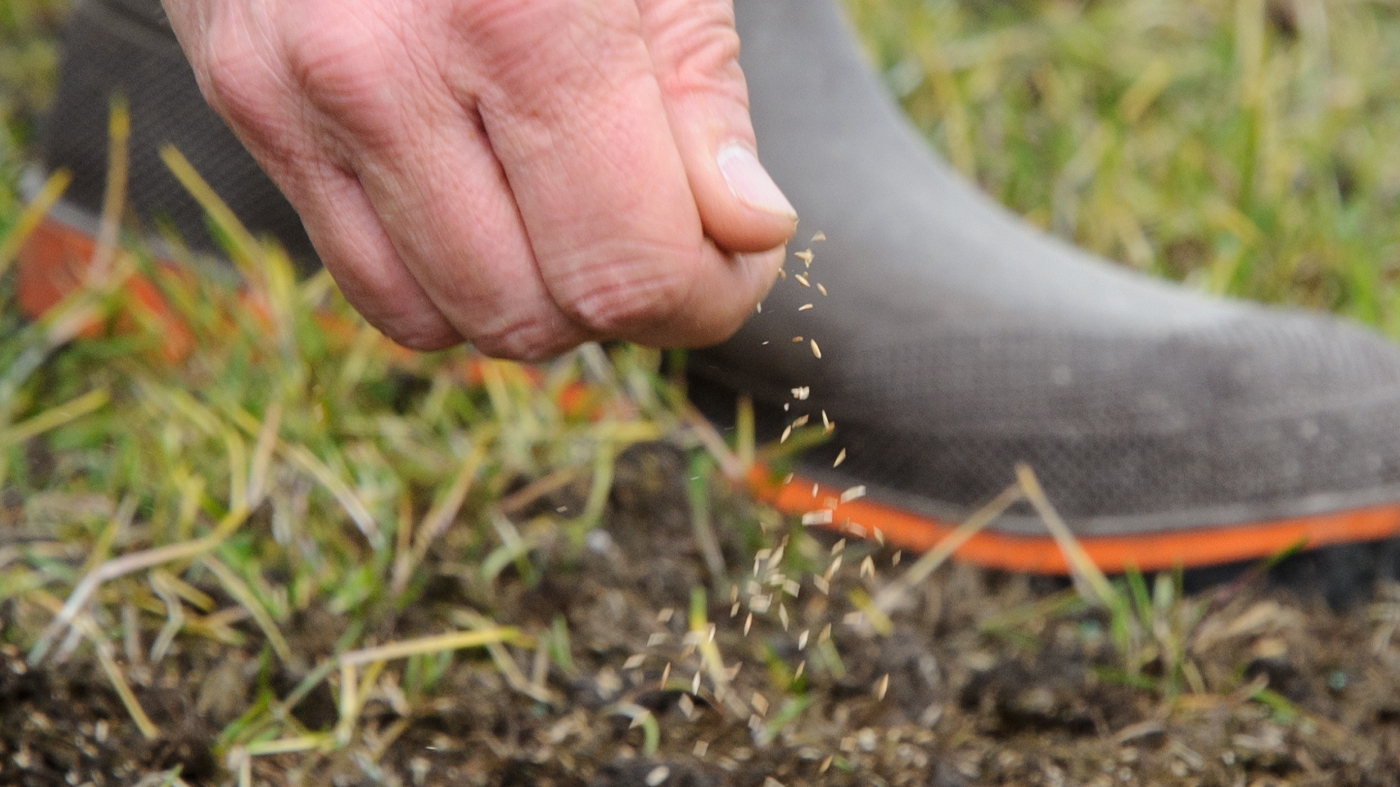
Seed and fertilize the lawn
If applying grass seed, do not use a pre-emergent weed killer in the same area.
Fertilize the lawn in mid-May, if necessary.
Monitor for weeds and hand pull or spot treat accordingly. Learn how to manually remove ten of the most persistent weeds commonly found in Midwestern yards.
May is a great month to …
build a bee house
Pollinators play a crucial role in our ecosystem, and their numbers are dwindling. Creating a “bee condo” can help some hard-working pollinators, such as native mason bees, find shelter from the elements and build nests. Bee houses with different-sized holes will encourage species diversity, too.

